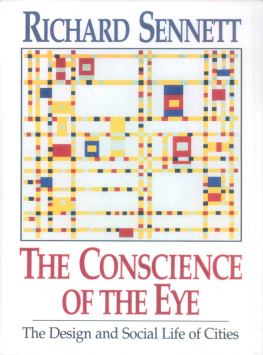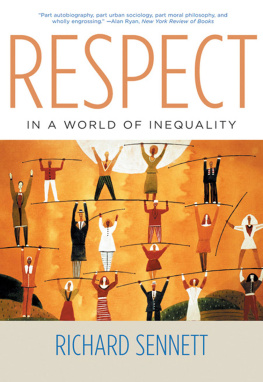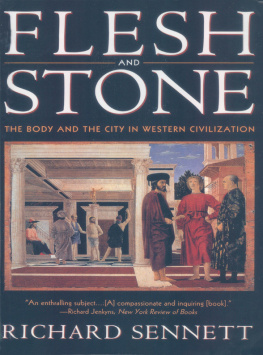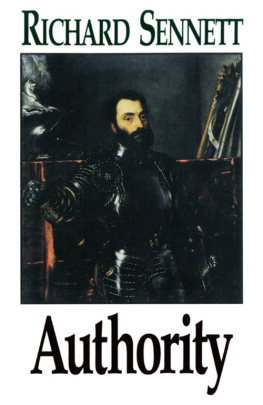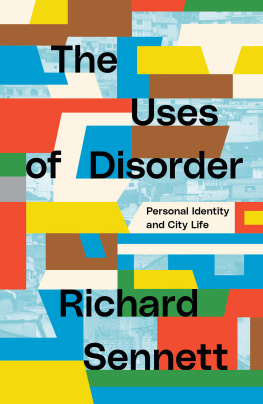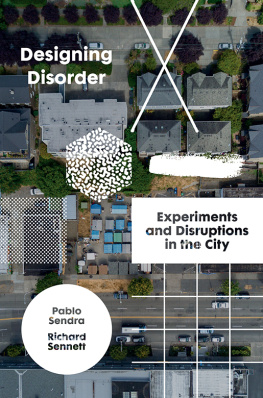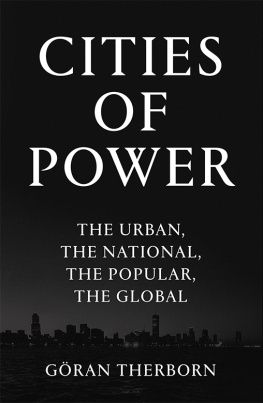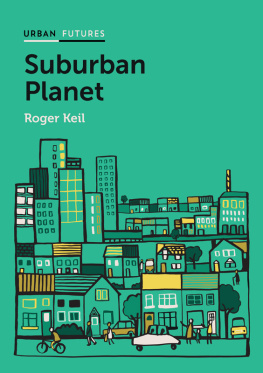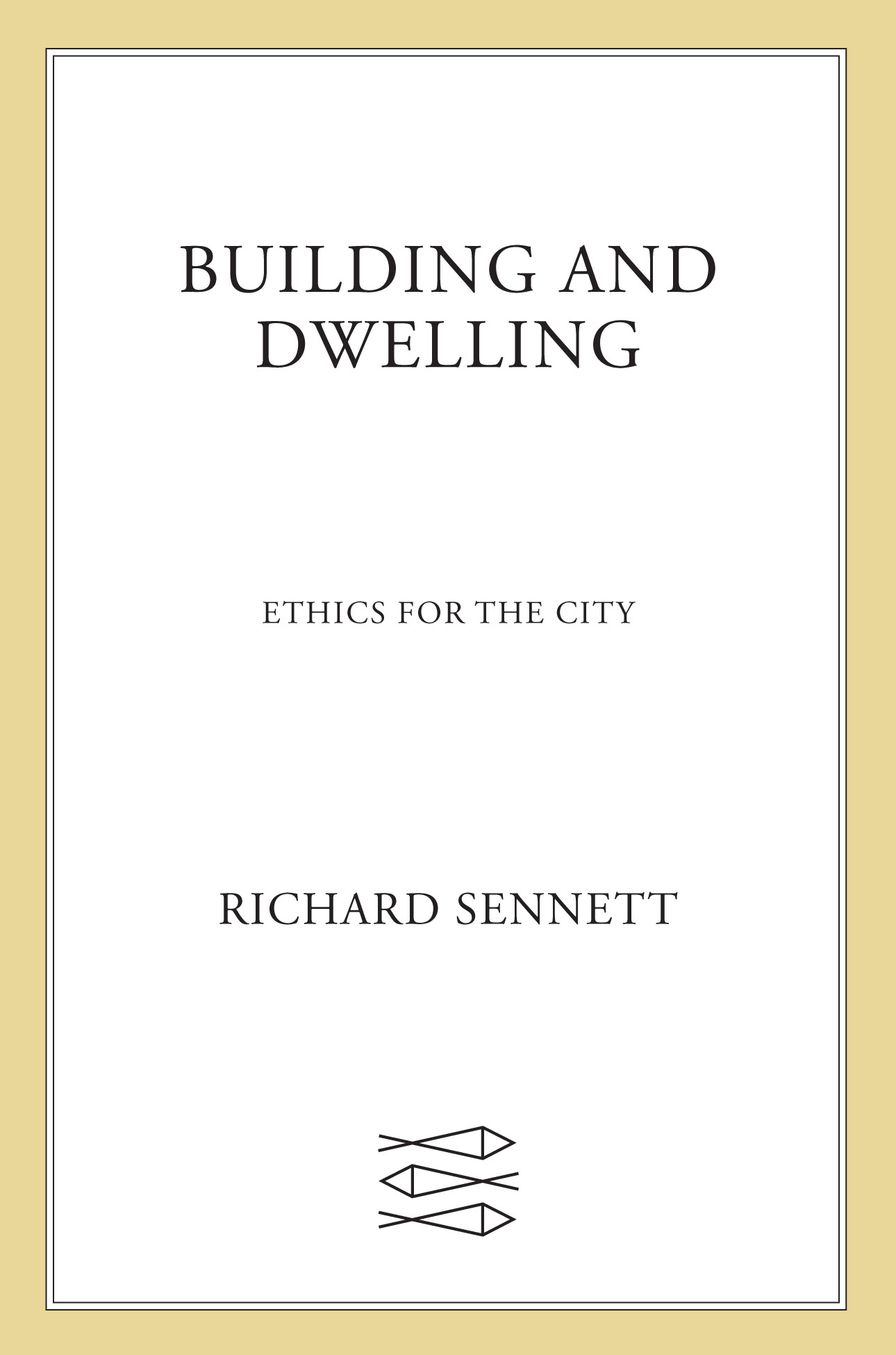Contents
Guide
Pagebreaks of the print version

The author and publisher have provided this e-book to you for your personal use only. You may not make this e-book publicly available in any way. Copyright infringement is against the law. If you believe the copy of this e-book you are reading infringes on the authors copyright, please notify the publisher at: us.macmillanusa.com/piracy.
For Ricky and Mika Burdett
A few years ago the Grim Reaper paid me an exploratory visit in the guise of a stroke (tobacco). Those who cared for me during this time were the physician Rom Naidoo and the physiotherapist Jayne Wedge; my stepson Hilary Koob-Sassen served as exercise drill-sergeant; my walkers were Dominic Parczuk, Ian Bostridge and Lucasta Miller. At a particularly depressing moment, Wolf Lepenies explained why medical stats should not rule ones outlook on life.
As people do after a serious illness, I reckoned what has really mattered to me. In looking back, Ive taken particular satisfaction in the urban studies programme Richard Burdett and I created at the London School of Economics fifteen years ago. The project Ricky and I launched seeks to connect how cities are built to how people live in them which is the theme of this book, and the reason it is dedicated to Ricky and to his wife, Mika.
John Lindsay, for whom I first worked as a young man, had a vision of New York as open to all; he held steadfast to this belief in the midst of racial violence and ethnic tensions, in a city sharply divided economically and decaying physically. The fact that he could not solve these problems does not make his vision wrong; in Building and Dwelling , I try to understand how it could be carried forward how cities in our time might open up.
For helpful discussions in creating this book Id like to thank the late Janet Abu-Lughod, the late Stuart Hall, Ash Amin, Kwame Anthony Appiah, Homi Bhabha, John Bingham-Hall, Craig Calhoun, Daniel Cohen, Diane Davis, Mitchell Duneier, Richard Foley, David Harvey, Eric Klinenberg, John Jungclaussen, Adam Kaasa, Monika Krause, Rahul Mehrotra, Carles Muro, Henk Ovink, Anne-Marie Slaughter, and most of all my partner of thirty years, Saskia Sassen: critic, bonne vivante , playmate. Its thanks to her that I first began to understand the ethical dimensions of city life. Gnter Gassner helped me explore the built environment, as did my students at Harvard Universitys Graduate School of Design and MITs Department of Urban Studies and Planning.
Finally, I want to thank those who have worked on producing the book, especially two editors, Alexander Star and Stuart Proffitt, who have been the most careful of readers; one agent, the ever-vigilant and ever-caring Cullen Stanley; and one former assistant, now my colleague and friend, Dominick Bagnato, who has kept me afloat throughout.
I. CROOKED
In early Christianity city stood for two cities: the City of God and the City of Man. St Augustine used the city as a metaphor for Gods design of faith, but the ancient reader of St Augustine who wandered the alleys, markets and forums of Rome would get no hint of how God worked as a city planner. Even as this Christian metaphor waned, the idea persisted that city meant two different things one a physical place, the other a mentality compiled from perceptions, behaviours and beliefs. The French language first came to sort out this distinction by using two different words: ville and cit .
Initially these named big and small: ville referred to the overall city, whereas cit designated a particular place. Some time in the sixteenth century the cit came to mean the character of life in a neighbourhood, the feelings people harboured about neighbours and strangers and attachments to place. This old distinction has faded today, at least in France; a cit now most often refers to those grim locales which warehouse the poor on the outskirts of towns. The older usage is worth reviving, though, because it describes a basic distinction: the built environment is one thing, how people dwell in it another. Today, in New York, traffic jams at the poorly designed tunnels belong to the ville , whereas the rat race driving many New Yorkers to the tunnels at dawn belongs to the cit .
As well as describing the cit s anthropology, cit can refer a kind of consciousness. Proust assembles from his characters perceptions of the various shops, flats, streets and palaces in which they dwell a picture of Paris as a whole, creating a sort of collective place-consciousness. This contrasts to Balzac, who tells you whats really up in town no matter what his characters think. Cit -consciousness can also represent how people want to live collectively, as during Pariss nineteenth-century unheavals when those in revolt couched their aspirations more generally than specific demands about lower taxes or bread prices; they argued for a new cit , that is, a new political mentality. Indeed, the cit stands next to citoyennet , the French word for citizenship.
The English phrase built environment doesnt do justice to the idea of the ville , if that word environment is taken to be the snails shell covering the living urban body within. Buildings are seldom isolated facts. Urban forms have their own inner dynamics, as in how buildings relate to one another, or to open spaces, or to infrastructure below ground, or to nature. In the making of the Eiffel Tower, for instance, planning documents in the 1880s canvassed places in eastern Paris far away from the Eiffel Tower before it was built, seeking to assess its urban-wide effects. Moreover, the financing of the Eiffel Tower could not alone explain its design; the same, huge amount of money could have been spent on another kind of monument, such as a triumphal church, which was the monument Eiffels conservative colleagues preferred. Once chosen, though, the towers form involved choices rather than being dictated by circumstances: straight rather than curving struts would have been much cheaper, but efficiency alone did not rule Eiffels vision. Which is true more largely: the built environment is more than a reflection of economics or politics; beyond these conditions, the forms of the built environment are the product of the makers will.
It might seem that cit and ville should fit together seamlessly: how people want to live should be expressed in how cities are built. But just here lies a great problem. Experience in a city, as in the bedroom or on the battlefield, is rarely seamless, it is much more often full of contradictions and jagged edges.
In an essay on cosmopolitan life, Immanuel Kant observed in 1784 that out of the crooked timber of humanity, no straight thing was ever made. A city is crooked because it is diverse, full of migrants speaking dozens of languages; because its inequalities are so glaring, svelte ladies lunching a few blocks away from exhausted transport cleaners; because of its stresses, as in concentrating too many young graduates chasing too few jobs Can the physical ville straighten out such difficulties? Will plans to pedestrianize a street do anything about the housing crisis? Will the use of sodium borosilicate glass in buildings make people more tolerant of immigrants? The city seems crooked in that asymmetry afflicts its cit and its ville .
It is sometimes right that there be a mis-fit between the builders own values and those of the public. This mis-fit ought to occur if people reject living with neighbours unlike themselves. Many Europeans find Muslim migrants indigestible; big chunks of Anglo-America feel Mexican migrants should be deported; and from Jerusalem to Mumbai those who pray to different gods find it difficult to live in the same place. One result of this social recoil appears in the gated communities which are today, throughout the world, the most popular form of new residential development. The urbanist should go against the will of the people, refusing to build gated communities; prejudice should be denied in the name of justice. But theres no straightforward way to translate justice into physical form as I discovered early on in a planning job.


